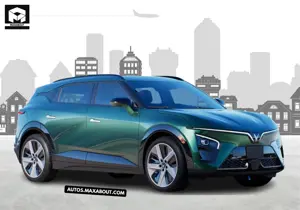What is the social stigma of the Jaunty-3W compared to traditional mobility scooters?
Jaunty-3W raises interesting questions about how the social perception of mobility aids is designed and marketed. Others claim that its sleeker, more modern design helps banish the stigma that is often attached to conventional mobility scooters, so users can be less self conscious. Some argue, however, that it will still clearly identify the user as having mobility issues, and will not change social attitudes that much. Beyond just design, the debate also explores broader issues such as disability visibility, inclusivity in design and the social consequences of technology. Also discussed is whether the focus should be on 'normalizing' mobility aids or whether society should instead make space for all forms of mobility needs, without the need to hide them.
Traditional mobility scooters look like this, and I think they look way cooler. It might help to reduce some of the stigma.
Most Popular Cars
Based on Cars Popular on Maxabout
Tata Altroz EV
₹ 12,00,000
1358 Views
Hyundai Grand i10 Nios Executive AMT
₹ 7,84,750
952 Views
Honda Jazz ZX
₹ 9,34,000
1602 Views Recently Added Cars
New Cars Added On Maxabout
Skoda Octavia RS
₹ 49,99,000
196 Views
VinFast VF7 Sky Infinity
₹ 25,49,000
628 Views
VinFast VF7 Sky
₹ 24,99,000
580 Views Upcoming Cars
Exciting Upcoming Cars
Maruti Swift Hybrid
₹ 10,00,000
1766 Views
Renault Boreal Bigster SUV
₹ 13,00,000
1888 Views
Leapmotor T03
₹ 8,00,000
1351 Views Discussions and Questions What Is The Social Stigma Of The Jaunty 3W Compared To Traditional Mobility Scooters
No answers found .
Latest News
Recently Added News
Toyota's New V8 Supercar Unleashed: December 5 Reveal Date Confirmed
Wednesday, 22 October 2025 21:43 PM
2026 Toyota FJ Cruiser Revealed – Baby Land Cruiser Returns Strong
Wednesday, 22 October 2025 20:19 PM
Kia Carens Clavis EV HTX E Launch: 2025 Price & Features Revealed
Saturday, 18 October 2025 14:09 PM















